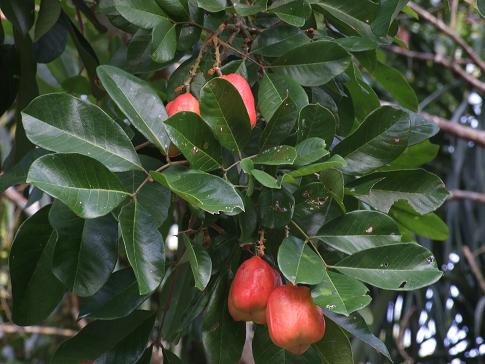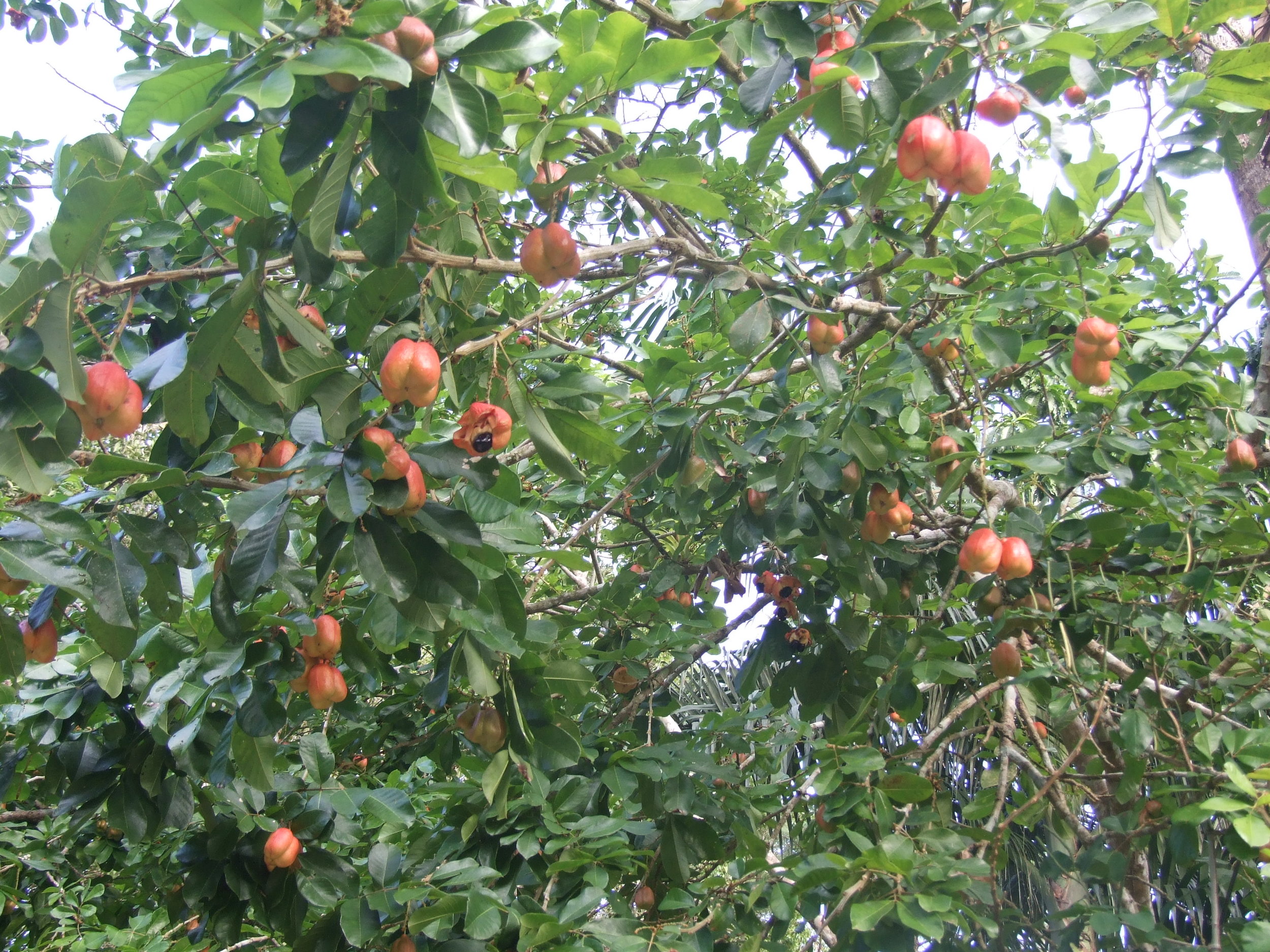California Buckeye are one of the first deciduous trees to leaf out in late winter / early spring. This is a photo of a swollen bud, close to flushing out.
Aesculus California growing out of a rock outcrop - Lake County, CA
In its natural habitat in Aesculus California seems to like to germinate out of rock spills, often growing out of cracks and crevices. These are very resilient trees with beautiful branching structure, often among the first trees to leaf out in late winter and the first trees to loose their leaves in mid - late summer.
Nephelium lappaceum - Rambutan, Mamon Chino
Native to Malaysia and Indonesia, the Rambutan is one of the most popular and common fruits in Southeast Asia where it is grown both on a domestic level, as a patio tree, and at a commercial level. It has been introduced to some areas of Africa and Central America, like Costa Rica and Panama, to a lesser extent. The Rambutan is a medium size tree reaching 15 -25 meters in height, with a straight trunk and a dense canopy.
The fruit is the shape of an egg encapsulated in a red, yellow, or sometimes orange casing covered in soft spiny hairs. The sweet, juicy, aromatic fruit is translucent and surrounds a large seed. There exist freestone cultivars. Fruit can range in acidity, yellow varieties tending to be more acidic than red.
Reportedly the seed is edible. I forget where I first heard this, but I have eaten the seeds raw, which are not disagreeable in flavor and gave me the sense that they were especially nutritious. Any further info regarding Rambutan seed edibility would be greatly appreciated.
The Rambutan fruit, like the Lychee, is rich in sugar (11%) and vitamin C.
There are more than 100 varieties of Rambutan in Indonesia, Malaysia and Thailand. Culitvars are distinguished by whether they are best consumed fresh (Ayer Mas, Chooi, Ang, Kelip, Rongrien, Tau po Cheng), or used in preserves (Chompu, Kepala Besar).
The Rambutan is a tree from the humid tropics. It isn't found cultivated higher than 600 meters. It has not been successfully cultivated in Florida and other subtropical areas and does not tolerate long periods of drought. The tree is not especially selective in soil type although it does best in heavy clay soils with a heavy organic mulch layer.
Nephellium mutabile - Pulasan
The Pulisan is native to South East Asia, widely cultivated in Indonesia, especially on the island of Java. It is also relatively well known in Malaysia, Thailand, and the Philippines. The tree grows up to 10 - 15 meters, with spreading branches and an irregular crown. The fruit is 5-8 cm long and 3-5 cm wide encased in a red or yellow capsule covered in short, soft spines, similar to that of the Rambutan, a close relative to the Pulasan. The fruit is most similar to the Rambutan, typically consumed raw, also made into marmalades and preserves.
There are two known groups of Pulasan varieties. Dark red and yellow. There are freestone cultivars in both groups. The most prized varieties are "Silbabat" and "Koneng".
The Pulasan requires a hot, humid climate. Trees cannot withstand prolonged dry seasons. To obtain quality fruit the tree needs deep, well drained soil, rich in organic matter.
The tree is propagated by seed, graft and air layer.
Sapindaceae, Blighia sapida, Akee, Seso Vegetal
Akee is native to and widely cultivated on the East coast of Africa. The English brought it from there to their colonies in the Caribbean where it is now well integrated. It is the national fruit of Jamaica.
The tree ranges in height from 10 - 25 meters. The canopy is open and broad. The fruit is a capsule in the form of a pear. When the fruit is ripe it splits open, exposing three shiny black seeds encased in a creamy white colored flesh, which is the part consumed. The fleshy arial has been described as looking similar to a small brain.
Akee is a curious and potentially dangerous fruit. If the unripe fruit is opened and the aril is eaten it can be deadly, or sufficiently poisonous to induce a coma. When picked before it is fully ripe the fruit contains a chemical that limits the body’s ability to release the backup supply of glucose that is stored in the liver. That supply is essential because once the body uses up the sugar immediately available in the bloodstream, an event that usually occurs several hours after eating, it depends on this glucose to keep blood sugar levels normal until the next meal. Without it, blood sugar plunges dangerously. Enough people have died from eating unripened akee to make it illegal to bring the raw fruit into the U.S although that restriction doesn’t apply to canned and properly processed akee.
Symptoms of akee poisoning can include uncontrollable vomiting, dizziness, severe hypoglycaemia, convulsions, coma and even death.
However, if the fruit is left to ripen and open itself, the flesh poses no danger whatsoever. All other parts of the fruit should never be eaten. I remember visiting the Lancetilla botanical gardens Tela, Honduras. In their flier they discuss Akee, giving reference to the wife of the founder to the garden who had the mishap of consuming unripe Akee and, as a result, falling into a coma and eventually dying.
Akee can be eaten fried or boiled, typically with fish or meat. The texture is similar to eggs. A curious fruit indeed.
Akee is considered highly nutritious due to its high content of fats.
The tree thrives in a hot, humid climate and does not support long, dry periods. It is best grown in deep, well drained, soils. Liming is beneficial.







